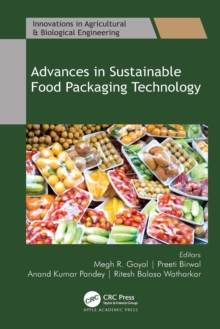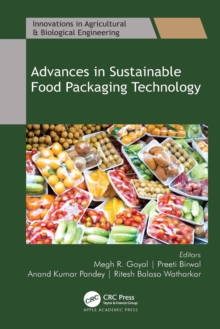
Bioremediation and Phytoremediation Technologies in Sustainable Soil Management : 4-volume set Multiple-component retail product
Edited by Junaid Ahmad Malik, Megh R. Goyal
Part of the Innovations in Agricultural & Biological Engineering series
Multiple-component retail product
- Information
Description
This 4-volume set focuses on the use of microbial bioremediation and phytoremediation to clean up pollutants in soil, such as pesticides, petroleum hydrocarbons, metals, and chlorinated solvents, which reduce the soil’s fertility and renders it unfit for plant growth.
The volumes cover the many diverse eco-friendly microbial bioremediation and phytoremediation techniques for sustainable soil management. Bioremediation and Phytoremediation Technologies in Sustainable Soil Management: Volume 1: Fundamental Aspects and Contaminated Sites begins with an overview of phytoremediation and phytotechnologies and the role of environmental factors.
It goes on to introduce soil assessment techniques and offers methods of remediation designed to combat soil and agricultural degradation.
Attention is given to specific types of sites and soil pollution, such as soils contaminated by heavy metals; microbial and phytoremediation-based removal of polycyclic aromatic hydrocarbons (PAHs) from coal, crude oil, and gasoline; microbial bioremediation and amelioration of pesticide-contaminated soils; phytoremediation techniques for biomedical waste contaminated sites; as well as biomediation processes for human waste sites.
Biopesticides are also explained in the book as an alternative to conventional pesticides as well as the possibilities for the improvement of modern bio-pesticides. Volume 2: Microbial Approaches and Recent Trends focuses on new and emerging techniques and approaches to address soil pollution.
These include the use of rhizobacteria, archae, cyanobacteria, and microalgae as biofertilizers and for soil bioremediation efforts.
New technologies for assessment of soil bioremediation are explored also.
The chapters provides in-depth coverage of the mechanisms, advantages, and disadvantages of the technologies used and highlights the use of different microbial enzymes that are used in the process of bioremediation and phytoremediation to clean up different pollutants without causing damage to the natural environment. Volume 3: Inventive Techniques, Research Methods, and Case Studies is organized in three themes: plants in green remediation, tools and techniques in bioremediation and phytoremediation, and special sites and their remediation techniques.
Innovative new techniques that advance the use of molecular biological approaches, nanotechnology, immobilization, vermicomposting and genetic modification developments are investigated to take advantage of these possibilities. Volume 4: Degradation of Pesticides and Polychlorinated Biphenyls addresses pesticide degradation, PCBs degradation, and genetic interventions.
It begins by describing environment pesticide degradation, mechanisms and sustainability, microbes and microbial enzymes, plant microbe interactions, organophosphorus degradations and endosulfan degradation.
It then goes on to discuss PCBs and degradation, cypermethrin, degradation by Phanerochaete chrysosporium, carvone and surfactants for degradation of PCBs.
The book also advocates for genetic systems for degradation of PCBs and pesticides, with discussion of the different advantages and disadvantages for each strategy and the various techniques. Together, these four volumes provide in-depth coverage of the mechanisms, advantages, and disadvantages of the bioremediation and phytoremediation technologies for safe and sustainable soil management.
The diverse topics help to arm biologists, agricultural engineers, environmental and soil scientists and chemists with the information and tools they need to address soil toxins that are a dangerous risk to plants, wildlife, humans and, of course, the soil itself.
Information
-
Pre-OrderFree UK DeliveryThis title is available for pre-order
- Format:Multiple-component retail product
- Pages:1578 pages, 44 Illustrations, color; 90 Illustrations, black and white
- Publisher:Apple Academic Press Inc.
- Publication Date:27/05/2024
- Category:
- ISBN:9781774911006
£290.00
£240.36
Information
-
Pre-OrderFree UK DeliveryThis title is available for pre-order
- Format:Multiple-component retail product
- Pages:1578 pages, 44 Illustrations, color; 90 Illustrations, black and white
- Publisher:Apple Academic Press Inc.
- Publication Date:27/05/2024
- Category:
- ISBN:9781774911006



